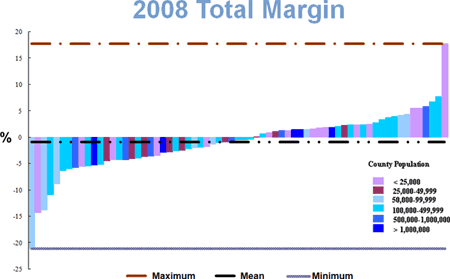Overview of the PHUND$ System

Sustainability of the governmental public health system is dependent principally on the financial health of state and local public health agencies. This is a challenge since public health programs and services are often provided in fiscally challenging environments (e.g., government revenue declines, budget reductions, economic recessions, unfunded mandates). Effective utilization of resources requires that public health professionals have access to timely, reliable, and uniform data to assess agency and system conditions and to use that information to support decisions. Development of The Public Health Uniform National Data System (PHUND$) responds to that need.
PHUND$ is a web-based financial data collection and analysis portal hosted by the National Association of County and City Health Officials (NACCHO). PHUND$ is designed to collect uniform local public health agency financial data and generates immediate feedback on agency financial and operational conditions through dashboards, benchmarking, ratio and trend analysis, and analysis of program financial performance. Since the initial design of a PHUND$ framework in 2006, data has always been collected in categories consistent with the Foundation Public Health Services. Benefits of PHUND$ include the ability to:
- Conduct comparative analysis with peer agencies in-state and across the nation through the benchmarking feature
- Determine financial condition through the use of financial and operational ratio and trend analysis
- Examine program sustainability through analysis to isolate drivers of surpluses or deficits
- Assess the overall financial and operational performance sustainability of the public health system
- Apply a systems approach to financial management
- Build the ability and culture to share knowledge
A NACCHO national advisory committee provided direction on the development of PHUND$. Committee members included representatives of state and local departments and ASTHO. Using a consensus building process, the advisory committee established analytical functions, data elements, and standardized definitions to ensure uniformity. The criteria established by the advisory committee could eventually serve as the foundation for a national public health chart of accounts.
The design and implementation of PHUND$ commences after five years (2006 - 2011) of training and evaluating ratio and trend analysis and benchmarking across five states – Florida, Ohio, Kansas, Kentucky, and West Virginia. Findings that over 50% of all local health departments in a large state were operating with a negative Total Margin (deficit position), as shown in the Figure 1 below, demonstrates just one of the analytical capacities of PHUND$ that can aid states in routinely assessing the financial health of the system and with articulating to policymakers and funders the strain on system sustainability.
Figure 1. State-wide Analysis of Total Margin¹ in all Local Health Agencies
Click on image for a larger view.
¹ Total Margin Formula=(Total Revenues-Total Expenditures)/Total Revenues)
In addition to seminars at NACCHO Annual meetings, multiple workshops were held over a five year period at National Association of Local Boards of Health (NALBOH) conferences, ASTHO Chief Financial Officer Meetings, and at American Public Health Association (APHA) Learning Institutes.
Introduction to PHUND$



